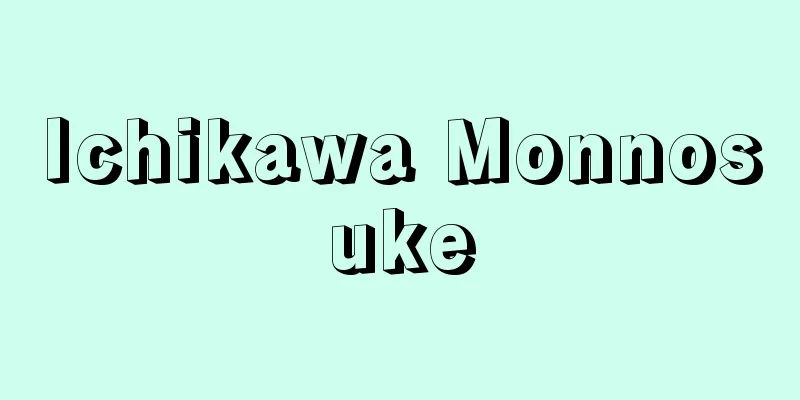Enterprise-specific unions

|
A labor union with a company as its organizational unit. Also known as an in-company union, it has been the basic organizational form of labor unions in Japan since the end of World War II. In a broad sense, it is understood to include enterprise federations (Kigyoren), which encompass unions at the workplace level belonging to the same company. Enterprise unions still account for 90% of unit unions in Japan today, and, along with lifetime employment and seniority-based wages, they form the defining characteristic of Japanese labor-management relations. The structure and form of labor unions vary depending on the industrial economy and historical background of each country. Labor unions in Japan were established as company unions for a number of reasons: after Japan was defeated in the war, the United States, which led the occupation of Japan, expected labor unions to play a key role in building democracy, and encouraged their formation at an early stage and at the company level; since the 1920s, there had been a tradition of managerial familyism and seniority-based labor-management relations; and after the Sino-Japanese War, the Industrial Patriotic Association, which had the philosophy of "labor and management as one," was formed in factories and workplaces as a national policy movement to increase production. One of the characteristics of enterprise unions is that membership is limited to regular employees of a particular company or establishment, and they are organised as so-called mixed occupation unions, which combine factory workers and office staff. Enterprise unions like this are extremely unique in the history of labor unions around the world, and are rarely seen in Europe and the United States, where unions have developed based on the organizational principle of cross-sectional and class-based ties that go beyond specific companies or employment relationships, such as occupational (skill) unions that organize workers with the same skills, or industrial unions that are made up of workers engaged in the same industry. For example, in Europe and the United States, a union that is organized at the company or business unit level, with labor and management working together, is called a company union, and since it generally lacks independence, it is considered a company union, and any efforts by employers to form such a union are rejected as an unfair labor practice. In Japan, enterprise unions cooperate with other labor unions in the same industry and are the unit organizations of national industrial single unions (sone-san). In addition, because enterprise unions are based on a specific enterprise, they can build labor-management relations that are in line with the actual circumstances of the enterprise. In addition, it has been pointed out that enterprise unions have the advantage that both labor and management can grasp the situation and respond flexibly in collective negotiations regarding working conditions such as employment, wages, working hours, transfers, education and training, and in the event of labor-management disputes or strikes. On the other hand, in terms of the relationship between unions and members, there are also positive aspects, such as the fact that union officials are selected from among the union members, who are employees, so the executives are familiar with the workplace and can communicate with union members at all times. However, compared to other occupational or industry-specific cross-sectional unions, enterprise unions often have a negative effect on the unity and solidarity of the entire workforce. First, because the qualifications and scope of union membership are limited to regular employees of a specific company, the labor market is enclosed within the company (internal labor market), making it difficult for labor union functions and activities to go beyond the boundaries of the company. As a result, the working conditions of union members, including wages and allowances, are dependent on the management situation of the specific company and the employer's policies, making it difficult to achieve the principle of "equal pay for equal work" and social equalization of working conditions, as with cross-sectional unions. Secondly, it is difficult for the union to maintain its independence. In the case of enterprise unions, especially in large companies, their internal organizations are generally set up in such a way that they correspond to each level of the organizational structure as branches and sub-branches. This makes them vulnerable to control and intervention by the employer at each level of the organization, and can lead to collusion between union leaders and the organizational structure, leading to a tendency for the union to become a government-friendly union or a danger of splitting up. Thirdly, there is the inherent problem of the dominance of corporate and employee consciousness. In the case of enterprise unions, the labor agreement generally adopts a union shop system, and union membership is obtained on the basis of employee status at the relevant company (employee membership is mandatory). For this reason, there is a tendency for a sense of unity with the company, such as "the union exists because of the company," and corporate egoism to take priority over a sense of union membership or class consciousness and solidarity as workers, which tends to hinder unified industrial struggles and solidarity activities with other unions. Fourth, enterprise unions usually exist as employee unions for regular employees, and do not include non-regular workers such as temporary workers, outside workers, dispatched workers, and part-time workers. This makes it easy for discrimination and conflict to arise between union members and non-union members over working conditions within a company, and the labor union itself lacks unity among the entire workforce, weakening its bargaining power with employers. As of the end of June 2001, the current state of Japan's labor unions was 67,706, with 11,212,000 members and an organization rate of 20.7%, both of which have been declining continuously since 1995 (Japan Labor Yearbook, 2002 edition, edited by Hosei University's Ohara Institute for Social Research). During this period, the number of employees (including non-regular employees) increased, reaching 54.13 million as of the end of June 2001 (ibid.). The current number of labor unions has been declining since 1995 for a number of reasons, including the advent of an age of economic globalization in which companies are exposed to "market competition" and are undergoing business restructuring and consolidation and the relocation of factories overseas; the government itself has pledged "regulatory reform" and is pursuing a policy of increasing employment fluidity; and the virtual collapse of traditional Japanese employment systems such as lifetime employment and seniority-based wages, with workers themselves seeking a more diverse range of employment arrangements and changing views on changing jobs. However, the decline in the organizational power of labor unions in Japan must be considered to be fundamentally rooted in the organizational principles and movements of enterprise unions themselves. In other words, as a result of the principle that Japanese enterprise unions require all regular employees to join at once, they tend to prioritize employee consciousness over union member consciousness. On the other hand, as society has changed since the 1990s and individuals' lifestyles and values have also changed, unions have not made efforts to form a new union identity that can take into account the diversifying demands of their members, and have allowed their organizations to become rigid along the lines of labor-management cooperation. The revitalization of Japanese labor unions, which are basically enterprise unions, requires the following conditions: (1) the union itself must draw out its members' initiative by carrying out diverse and detailed workplace activities, (2) it must dispel its members' corporate mentality by strengthening local activities and unified struggles by industry, (3) it must strengthen its organizational power by bringing together non-regular employees such as temporary workers and part-time workers, and (4) it must promote the organization of labor unions through diverse individual participation, such as regional unions, craft unions, and women's unions, and encourage these unions to join national centers or strengthen ties with these unions. [Kenji Yoshida] "Community Union Declaration" edited by the Community Union Research Group (1988, Daiichi Shorin)" ▽ "The Theory of Enterprise Unions" by Kosuke Kasai (1989, Nippon Hyoronsha) ▽ "Enterprise Unions in a Mature Society" edited by Takeshi Inagami (1995, Japan Institute for Labor Policy and Training) [References] | | | | | | | |Source: Shogakukan Encyclopedia Nipponica About Encyclopedia Nipponica Information | Legend |
|
企業を組織単位とする労働組合。企業内組合ともいわれ、第二次世界大戦後における日本の労働組合の基本的な組織形態となっている。広義に、同一企業に所属する事業所単位の組合を網羅した企業別連合体(企業連)を含めて理解されている。企業別組合は現在も日本の単位組合の90%を占め、終身雇用、年功賃金と並んで、日本的労使関係の特質を形成するものとなっている。 労働組合の組織や形態は、その国の産業経済や歴史的な背景によってさまざまである。日本の労働組合が企業別組合として成立したのは、敗戦後、日本占領を主導したアメリカが民主主義形成の担い手として労働組合に期待し、早期かつ企業単位にその結成を奨励したこと、1920年代以来、経営家族主義の伝統や「年功」的な労使関係が存在していたこと、また日中戦争以降、生産増強の国策運動として「労資一体」を理念とする産業報国会が工場・事業場に結成されていたこと、などがあげられる。 企業別組合の特徴の一つは、組合員の資格を特定の企業あるいは事業所の正規の従業員のみに限り、かつ工員と職員を一体で構成するいわゆる工職混合組合として組織されていることにある。 このような企業別組合は、世界の労働組合の歴史からみると、きわめて特異な存在で、同一の技能をもって組織する職業(能)別組合や同一の産業に従事する労働者で構成する産業別組合など、特定の企業または雇用関係を超えた横断的・階級的結合を組織原理として発展してきた欧米においてはあまり例をみない。たとえば、欧米では企業または事業所単位に、労使が一体となった形で組織される組合を会社組合(company union)とよび、一般に独立性を欠くゆえに御用組合とみなされ、使用者による結成の働きかけは不当労働行為として排されている。 日本の企業別組合は、他の同一産業の労働組合と連携を保ち、全国的な産業別単一組合(単産)の単位組織となっている。また、企業別組合は特定企業を単位としているため、企業の実態に即した労使関係を構築することができるほか、雇用、賃金、労働時間、異動、教育・研修など労働条件に関する団体交渉においても、あるいは労使紛争やストライキの発生に際しても、労使双方が状況を把握して機動的に対応することができる、という利点が指摘されている。他方、組合と組合員の関係でも、組合役員は従業員である組合員から選任されるので、執行部は現場に精通し、かつ組合員とは常時意思疎通を図ることができる、などの積極的な側面もあげられている。 しかし、企業別組合は他の職業別、産業別の横断組合と比較した場合、労働者全体の統一や団結にとってむしろマイナスに機能している例が多い。第一に、組合員の資格と範囲が特定企業における正規の従業員に限られていることから、労働市場が企業内部に囲われ(内部労働市場)、労働組合としての機能や活動が企業の枠を踏み出しにくいものとなっている。このため、給与・手当をはじめとする組合員の労働条件は、特定企業の経営状態や使用者の方針に左右され、横断組合のように「同一労働・同一賃金」の原則や労働条件の社会的平準化を図ることが困難な事態となっている。 第二に、労働組合としての独立性が保持しにくい。企業別組合の場合、とくに大企業においてその内部組織は、一般に支部、分会などと職制機構の各段階に対応してつくられている。このため、組織の各段階において使用者側から支配・介入を受けやすいほか、組合幹部と職制の癒着が生まれて御用組合化の傾向を帯びたり、組合分裂の危険をはらむものとなっている。 第三に、企業意識、従業員意識の優位という問題性も内包している。企業別組合の場合、労働協約上では一般にユニオン・ショップ制がとられ、組合員の資格は当該企業の従業員身分のうえに取得される(被雇用者の組合加入の義務づけ)。このため組合員意識とか、労働者としての階級意識や連帯意識よりは、むしろ「会社あっての組合」など企業との一体意識や企業エゴイズムが優先される傾向にあり、産業別統一闘争や他の組合との連帯活動が阻害されやすい。 第四に、企業別組合は通例、正規雇用者の従業員組合として存在し、臨時工、社外工、派遣労働者、パートタイム労働者などの非正規労働者は加入していない。このため企業内では労働条件などをめぐって組合員と非組合員との間に差別や対立が生じやすく、また労働組合それ自体、従業員全体としてのまとまりを欠く結果、使用者側に対してその交渉力を弱めている。 日本の労働組合の組織現勢は、2001年(平成13)6月末現在で6万7706組合、組合員数1121万2000人、組織率20.7%で、いずれも1995年以来連続しての減少であった(法政大学大原社会問題研究所編『日本労働年鑑』2002年版)。この間、雇用者数(非正規雇用を含む)は増加し、2001年6月末現在で5413万人となっている(同)。 労働組合の組織現勢が1995年以来、減少を重ねているのは、経済におけるグローバル化の時代を迎えて企業が「市場競争」にさらされ、事業の再編統合や海外への工場移転を進めていること、政府自ら「規制改革」を公約して雇用の流動化政策を進めていること、終身雇用や年功賃金など日本的な雇用制度が事実上崩れ、労働者自身、雇用形態の多様化を志向し、転職観も変わってきていること、などがあげられる。 しかし、日本における労働組合の組織力の低下は、基本的には企業別組合としての組織原理と運動それ自体に根ざすものと考えなければならない。すなわち、日本の企業別組合は正規社員の一括加入を原則としている結果、組合員意識より従業員意識を優先する傾向にあり、他方で、1990年代以降、社会が変化して個人の生活様式も価値観も変わっているなか、組合が、組合員の多様化した要求を汲(く)み上げる新しいユニオン・アイデンティティの形成に努めず、労使協調的な路線のもとで組織を硬直化させてきた。 企業別組合を基本形態とする日本労働組合の再生は、(1)組合自体、多様できめ細かな職場活動を展開するなかから組合員の主体性を引き出すこと、(2)地域活動や産業別の統一闘争を強めるなかで組合員の企業意識を払拭(ふっしょく)すること、(3)派遣労働者やパートタイム労働者など非正規雇用者を結集して組織力を強めること、(4)地域ユニオン、クラフト・ユニオン、女性ユニオンなど、多様な個人参加による労働組合の組織化を進めてこれのナショナルセンターへの加入促進を図る、またはこれと連携を強めること、などが条件としてあげられるであろう。 [吉田健二] 『コミュニティ・ユニオン研究会編『コミュニティ・ユニオン宣言』(1988・第一書林)』▽『河西宏祐著『企業別組合の理論』(1989・日本評論社)』▽『稲上毅編『成熟社会のなかの企業別組合』(1995・日本労働研究機構)』 [参照項目] | | | | | | | |出典 小学館 日本大百科全書(ニッポニカ)日本大百科全書(ニッポニカ)について 情報 | 凡例 |
>>: Corporate division - divestment (UK)/divestitures (US)
Recommend
Kish [island] - Kish
...The main port of trade in the Persian Gulf at ...
Appian Way - Appian Way (English spelling)
An ancient Roman national road. It was named afte...
King's Association - King's Association
…Graduated from the Naval Academy. While he was a...
Oregon
...A ship whose main purpose is to transport pass...
Sorkočeviĉ, L. (English spelling) SorkocevicL
...A country that existed in the western Balkan P...
Dal'verzin Tepe (English spelling)
The remains of a capital city dating from the 3rd ...
Caldarium
…Ordinary Roman citizens who did not have their o...
Academie du Palais - Academie du Palais
… After the 17th century, academies left the hand...
concilium provinciae
…In the east, he made peace with Parthia, made Ga...
Massys, C. (English spelling) MassysC
…Flemish painter. Also spelled Matsys, Matsijs, M...
olfactory sac (English) olfactorysac
… All vertebrates other than those in the above g...
Flag of convenience vessel
FOC is a term used to refer to a ship whose owner...
Shinobazu Bunko
This library was owned by Yashiro Hirokata, a Japa...
Carex scabrifolia (English spelling) Carexscabrifolia
…[Tetsuo Koyama]. … *Some of the terminology that...
Turf maze
...Today, remains of these can be seen in places ...









